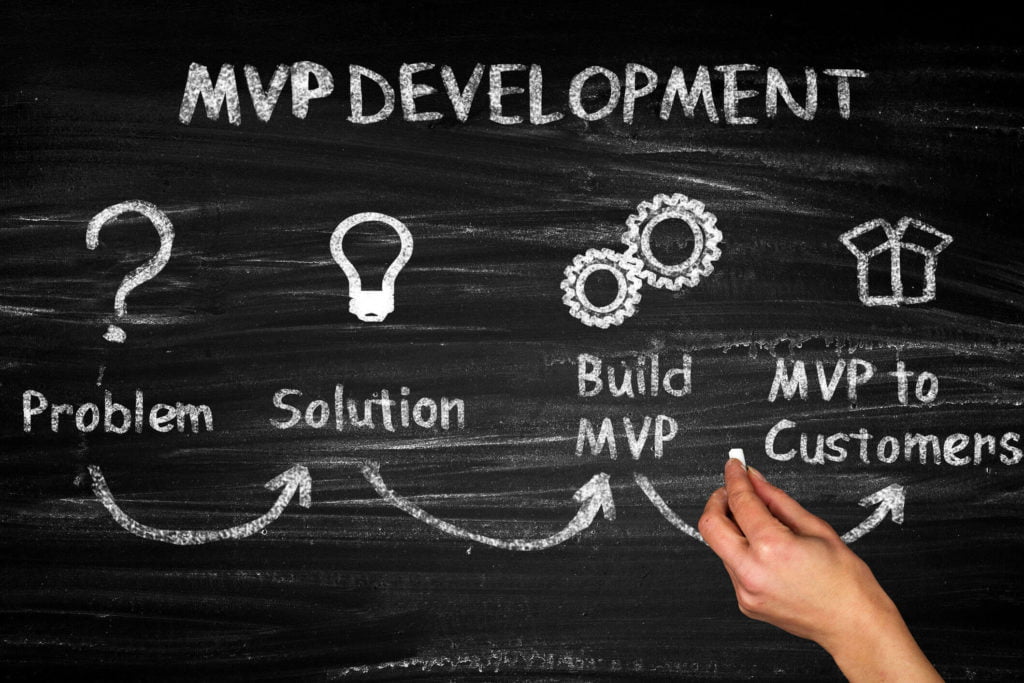In order for us to understand what MVP is we need to go beyond the concept and contextualize it. In this sense, it is important to highlight what makes it different from other very similar concepts – such as the prototype.
After all, people often mistake building an MVP for prototyping, which is something that cannot happen, because they are very distinct processes. They complement each other but their goals are very different.
And this is what we will discuss in this article. Keep reading and find out what an MVP is, why it is important for project development and also how it is different from a prototype!
What MVP is
MVP is an acronym for Minimum Viable Product. This concept was conceived by means of a Lean mentality, or more precisely by Eric Ries, an entrepreneur of the Silicon Valley.
Ries describes an MVP as a synthesis of two extreme points:
As far as product design is concerned, there is a school of thought that can be described as something like “we have a chance, let’s do it right by building the most perfect product possible”. This seems like a rational approach. However, what happens if, after 5 years of research and development, you discover that nobody wants your product?
Another school of thought is known as release early, release often and listen to what customers have to say and do an iteration about it. Basically, an MVP is the minimum set of resources necessary to engage the first users and begin the feedback loop. This helps managers and members of the project start the learning process as quickly as possible.
How an MVP is different from a prototype
A lot of people mistake an MVP for a prototype, but they are not the same.
Prototypes are great for attracting the interested parties into a project, specially after a presentation. An early cash injection from initial investors after a successful presentation can then create a focus for the prototype: implementation in production. That is when designers have to come up with an MVP.
MVPs are used for obtaining insights from the first users of a product. Now, everything can sound extremely similar to a prototype. But, let’s get deeper into it.
An MVP is a prototype in its core, but further ahead into the process of developing a product. An MVP will be created after you have tested all the hypothesis through prototypes and after you have developed a proof of concept. Ideally, you will create the minimum version of your product (which you will eventually improve) and then you will share it with the greatest number of people possible.
In essence, a prototype is the basis for what will then become the minimum viable product (MVP). And the main difference between them is their viability. In other words, a prototype is not enough; it is also necessary to have an MVP.
On the whole, prototyping helps us understand the viability of an idea and an MVP is more about the validated learning, which is one of the principles of Lean Startup.
What advantages an MVP brings to projects
Now that you have understood what an MVP is and how it is different from a prototype, let’s analyze the benefits of using it into your projects. Check it out:
An MVP makes it easy to make a value proposition
An MVP compels you to clearly define your proposition, being concrete and (a little) narrow. It makes you examine the size and depth of your vision and precisely define the value you wish to provide your ideal customer with.
An MVP accelerates the evolution of the product
Because an MVP means going into the market with essential resources and features, it permits you to start building a user base and start obtaining information about what works and what does not. This allows the team to use such data to make decisions about future iterations, including other resources to be added, aspects that can help you increase sales and where to allocate your budget.
An MVP optimizes costs
Many times mature products are the result of years of development, with the price to be agreed upon. When they are created iteratively for a longer period of time, the cost is distributed throughout this time, usually using reinvestments from the income generated by the previous versions of such product.
MVPs allow you to use the same approach, generating a greater value for your business and minimizing costs.
An MVP reduces rework
Building what is strictly enough to validate your hypothesis means that, if rework is necessary, it is going to be minimum. When you keep your initial launch to a minimum and then proceed with the following launches, you will be more agile and responsive to the market.
In sum, as far as designing and launching new products are concerned, you invariably need to think about prototypes and MVPs. Each approach plays an important role in the designing process. Also, it is key to know what and how to create each one of them if you want to design a successful product.
How did you like this article? Have you understood what an MVP is and why you should use it in your projects? So, check out now why you should invest in Poc Design!




